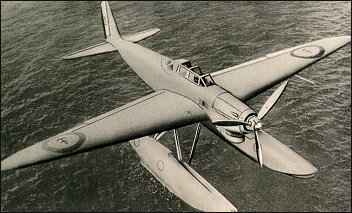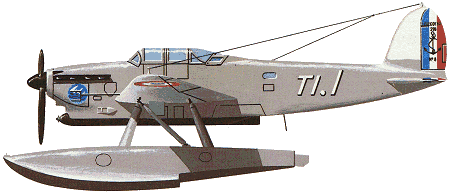 |
Latecoere 2981936 |  |
| TORPEDO BOMBER | Virtual Aircraft Museum / France / Latecoere |
 |
A multi-purpose twin-float seaplane, the prototype Late 298.01 first flew on 8 May 1936. Intended missions included torpedo bombing; horizontal or shallow dive bombing (with two bombs of up to 150 kg each); long-range reconnaissance (with extra 535 litre fuel tank); night reconnaissance; and smokescreen laying. A cantilever low-wing monoplane with an all-metal oval-section stressed-skin fuselage, the production Late 298A was powered by a 656kW Hispano-Suiza 12Ycrs engine and had a crew of three accommodated under a glazed canopy. The Late 298B version had folding wings for shipboard stowage. Armament comprised two fixed 7.5mm Darne wing guns and a third Darne machine-gun on a flexible mounting at the rear of the crew canopy. The Late 298D had a fourth crew member, and the 'one-off' unsuccessful Late 298E had a ventral observation gondola. Some 110 Late 298 of all versions had been built by 25 June 1940 and a further 20 Late 298F (with MAC instead of Darne weapons and two additional 7.7mm machine-guns for ventral 'under-tail' defence) were built for the French Vichy regime. The first naval escadrilles to equip with the type were T2 at Saint-Raphael and T1 at Berre in February and March 1939 respectively. Escadrilles HB1 and HB2 on the seaplane carrier Commandant Teste re-equipped with Late 298B in April and July the same year. From then on the type saw widespread service, flying overland in shallow dive-bombing attacks during the May-June 1940 'Blitzkrieg' on France and subsequently continuing to operate - mainly on reconnaissance missions - with both the Vichy and Free French forces. Several captured aircraft were used for liaison duties by the Germans. A number of Late 298 continued into the post-World War II period with the French Aeronavale.

|  COMPANY PROFILE | ||||||||||||||||||||||||||||||||||||||||||||||||||||||
 |

|

